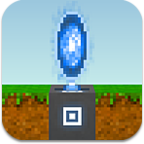Anonymous user
User:McClaw: Difference between revisions
From The Blockheads Wiki
no edit summary
>McClaw m (→Wish List) |
>McClaw No edit summary |
||
| Line 36: | Line 36: | ||
:* Copper urn / boiler / percolator to turn roasted coffee beans and water into coffee (refill cup) while a Blockhead is away. | :* Copper urn / boiler / percolator to turn roasted coffee beans and water into coffee (refill cup) while a Blockhead is away. | ||
:* A copper or bronze "harpoon" that's more effective against fish and sharks. Say one blow for a fish, at most two for a really big shark? (Although just making the existing flint spear more effective than a sword against fish and sharks would work.) | :* A copper or bronze "harpoon" that's more effective against fish and sharks. Say one blow for a fish, at most two for a really big shark? (Although just making the existing flint spear more effective than a sword against fish and sharks would work.) | ||
== Tips == | |||
I thought I'd share some of my strategies, tactics, and opinions here so I'm not tempted to put them in the regular articles. | |||
* Playing multiple Blockheads in a world takes a lot of coordination. While it speeds results, it's too much for most players. | |||
* When just starting a new world: | |||
** Make your first priority two blocks of dirt, one stick (don't use the shovel), and several blocks of flint. Use these to make a Workbench, then a Tool Bench, and then a machete. | |||
** Use the machete to get sticks more efficiently for making a campfire, and a spare spade (the first will go fast). | |||
** Now get another dirt for a Craft Bench to make baskets, one per Inventory slot. | |||
** With inventory space to spare, make your first pickaxe. | |||
** Dig down and use the pickaxe to mine all the stone it can (sixteen), ignoring limestone and anything else. (There's always stone in a column below the Portal.) | |||
** Use that stone to upgrade the Tool Bench, make a stone pickaxe, and a stone enclosure for your campfire. | |||
** Your Blockhead is now equipped to start branching out, but making stone tools is a good option. (You'll have to stick with flint machetes until you master bronze.) | |||
* A simple barrier against animals is a two block deep hole; on level ground it barely slows a passing Blockhead. Another is a door; give it the appearance you want by stacking a sample of the desired block on a three-high column, remove the two below, place the door, then remove the top block. I also like to put a lantern on top of the result. | |||
* Pine trees are an excellent source of sticks and wood, and getting rid of one removes the chance it will spawn a dropbear. (Very important if it's near your starting shelter.) | |||
* I like to organize my tools in baskets along with at least one of their common harvesting products and commonly useful items. (Spade with dirt, flint, and clay; machete with stick, trapdoor; axe with wood, ladder, and gem pickaxe; pickaxe with stone, coal, and gold pickaxe.) These are swapped in and out from a basket at the bottom of the inventory into the two slots above. Other items / special combo baskets are stored in the next basket up, while the upper inventory is used for special tasks and random pick-up. | |||
* Mining ores (except for iron) is more productive when using a gold pickaxe to do most of the work (all but the last two of the needed 32 strokes) and finishing with a gem pickaxe. It not only produces the occasional bonus (including 10x the ore), but gives me time to switch over to the gem pickaxe and abort just before harvesting. The gem pickaxe will give the multiplier only if it makes the final stroke; it doesn't care about the rest. | |||
* Diagonal tunnels are highly efficient for travel. A Blockhead travels horizontally about as fast as it does on a level surface, and vertically probably faster than on a ladder. It's also not difficult to make cross- or side-tunnels with a minimum of disruption. | |||
* Digging a (mostly) horizontal tunnel through the dirt across the top of the bedrock makes for a good way to find most of the clay (more valuable than flint in the long run) and buried golden chests. It also leaves a travel route to go from shelter to shelter without risking bad environments or dropbears. | |||
* The basic oil lantern provides better light than a torch and is easier to produce in quantity than steel lanterns. | |||
* When placing lights, my "rule" is to set the next one out as far as I can confidently identify a path and space. The results will overlap and reinforce between sources, giving better results overall. | |||
* Yes, you can use amethysts for light, but they're short range only. They're not bad for lighting (and marking) a tunnel by placing them side-by-side. | |||
* Use the "watch video" option for free Time Crystals (off the Pause menu) as often as they're available. It's faster than mining the darn things and cheaper than paying for them. | |||
